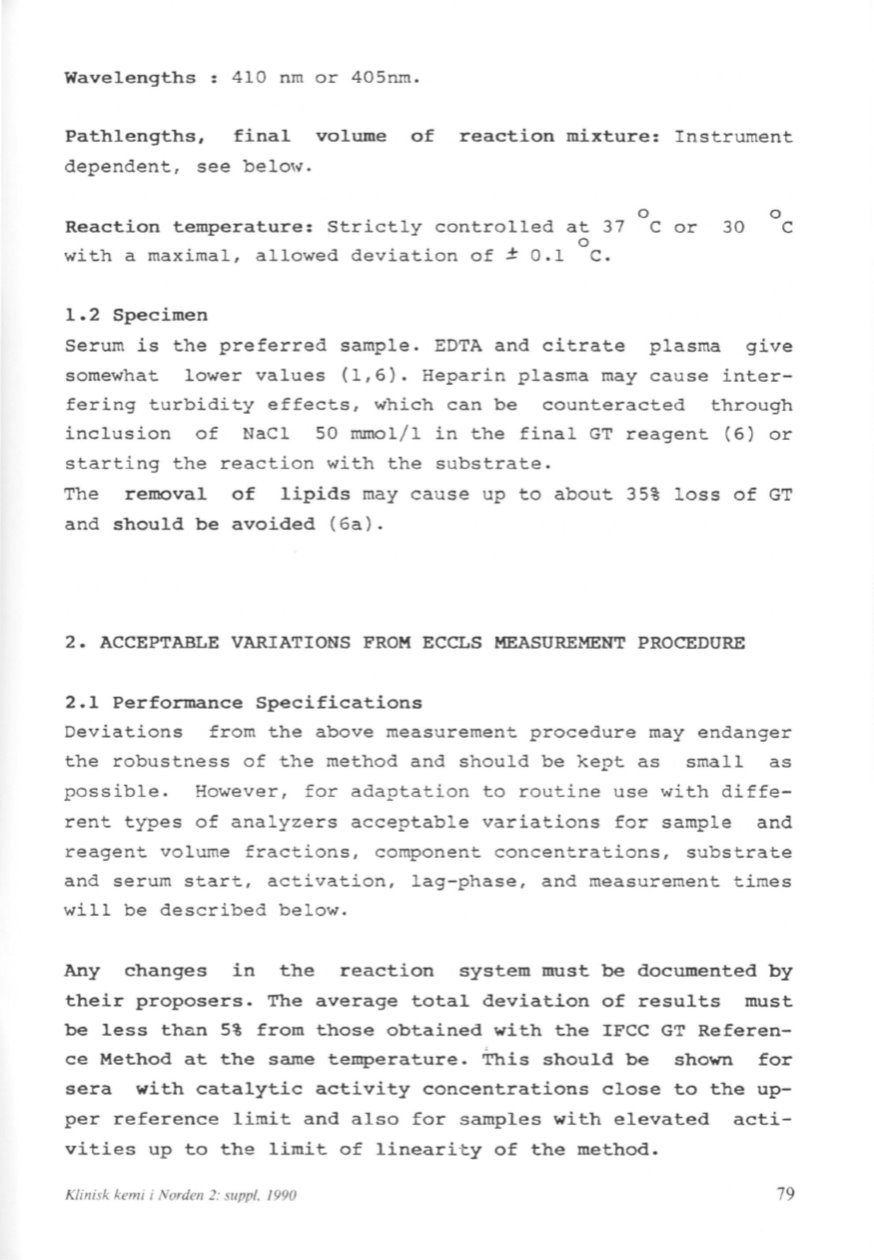
Wavelengths
410 nm or 405nm.
Pathlengths, final volume of reaction mixture: Instrument
dependent, see below.
o
o
Reaction temperature: Strictly controlled at 37 C or 30
C
o
with a maximal, allowed deviation of
±
0.1
c.
1.2 Specimen
Serum is the preferred sample. EDTA and citrate plasma give
sernewhat lower values (1,6). Heparin plasmamaycause inter–
fering turbidity effec t s, which can be counteracted through
inclusion of NaCl 50 mmol/1 in the final GT reagent (6) or
starting the reac t ion with the substrate.
The removal of lipids may cause up to about 35% loss of GT
and should be avoided (6a).
2. ACCEPTABLE VARIATIONs FROM ECCLS MEASUREMENT PROCEDURE
2.1 Performance Specifications
Deviations from the above meas u rement procedure may endanger
the robustness of the method and should be kept as small as
possible. However, for adaptation to routine use with diffe–
rent types of analyzers acceptable variations for sample and
reagent volume fractions, component concentrations, substrate
and serum start, activation, lag-phase, and measurement times
will be described below .
Any changes in the reaction system must be documented by
their proposers. The average total deviation of results must
be less than 5% from those obtained with the IFCC GT Referen–
ce Method at the same temperature. This should be shown for
sera with catalytic activity concentrations close to the up–
per reference limit and also for sarnples with elevated acti–
vities up to the limit of lineari-ty of the method.
Klinisk kemi
i
Norden 2: suppl, 1990
79


